In the old royal city of Perth, the new museum displays one of Scotland’s most important national treasures: the Stone of Destiny. But the museum offers even more.
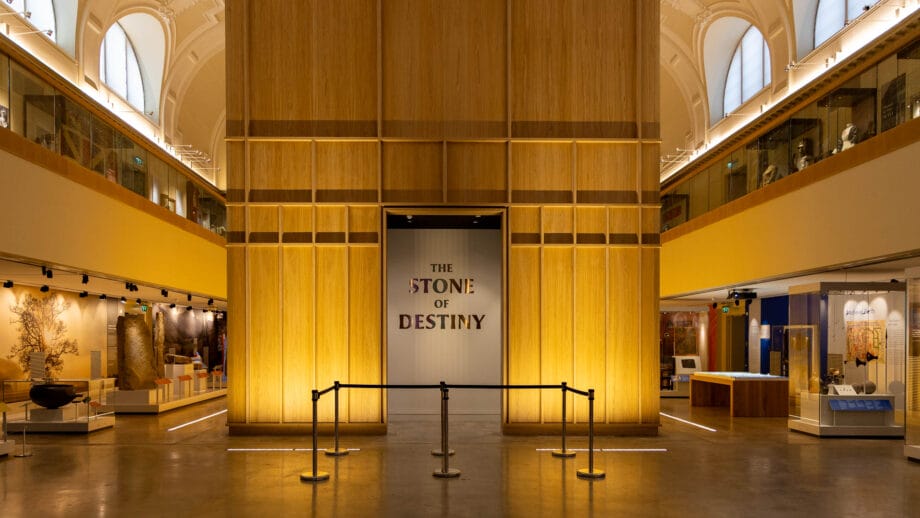
A meteorite, a pikestone, a prehistoric wooden boat, a giant salmon and a tiny biting fly – these are just a few of the fascinating exhibits in the Perth Museum. But one steals the show: the Stone of Scone or Stone of Destiny. Scottish kings were once crowned on it. But the new museum should not be reduced to this.
From the outside, the Perth Museum has a typical façade from the turn of the century. It’s called Edwardian. But the exhibition rooms, which have only been open since March 2024, are not at all like the grey-brown stone on the outside.
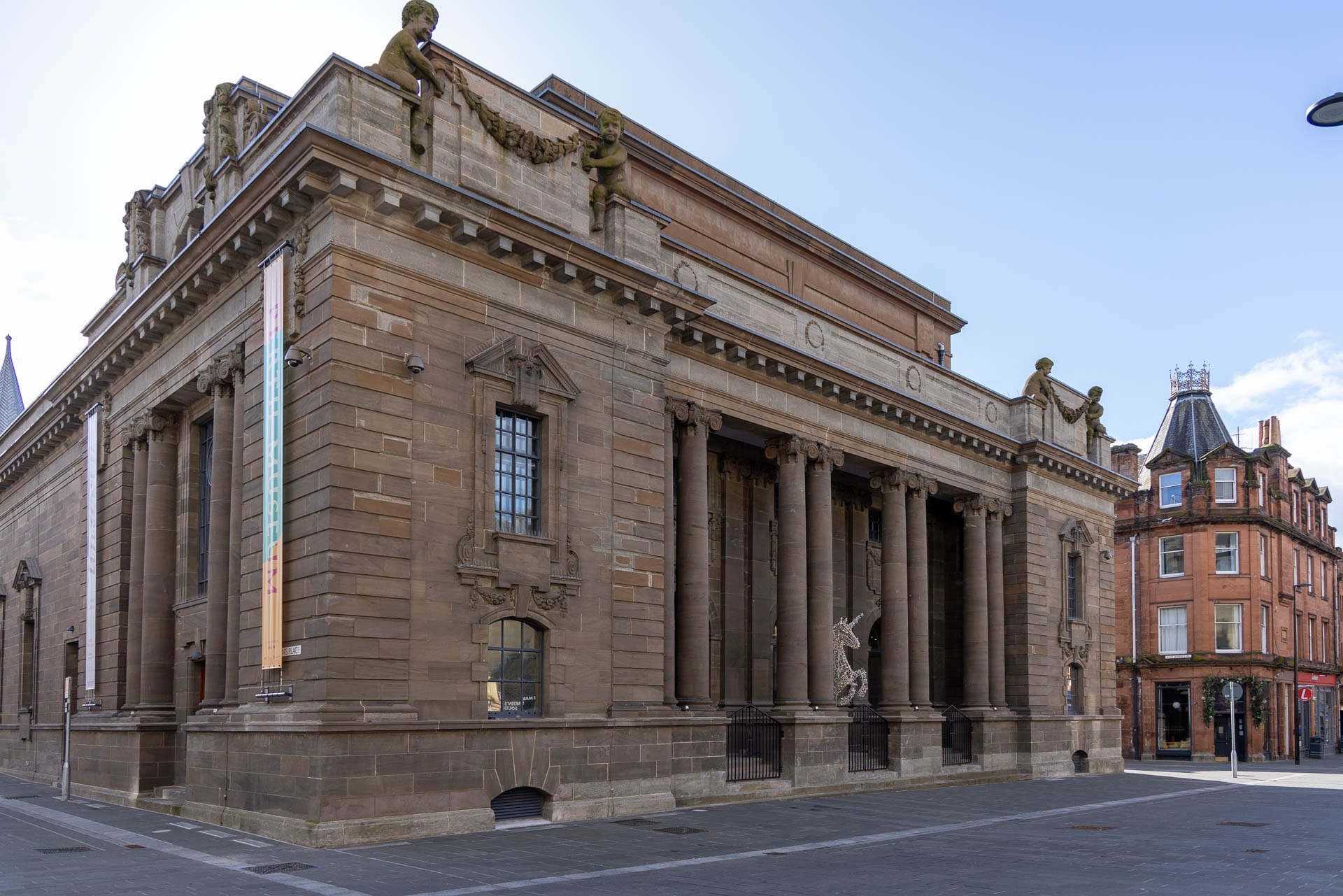
Instead, the architects have created a warm wooden atmosphere inside, which gives the exhibits space and prominence in their glass showcases. And they have also proceeded with care, not hiding the beauty of the old hall. The old barrel vault still spans the two floors.
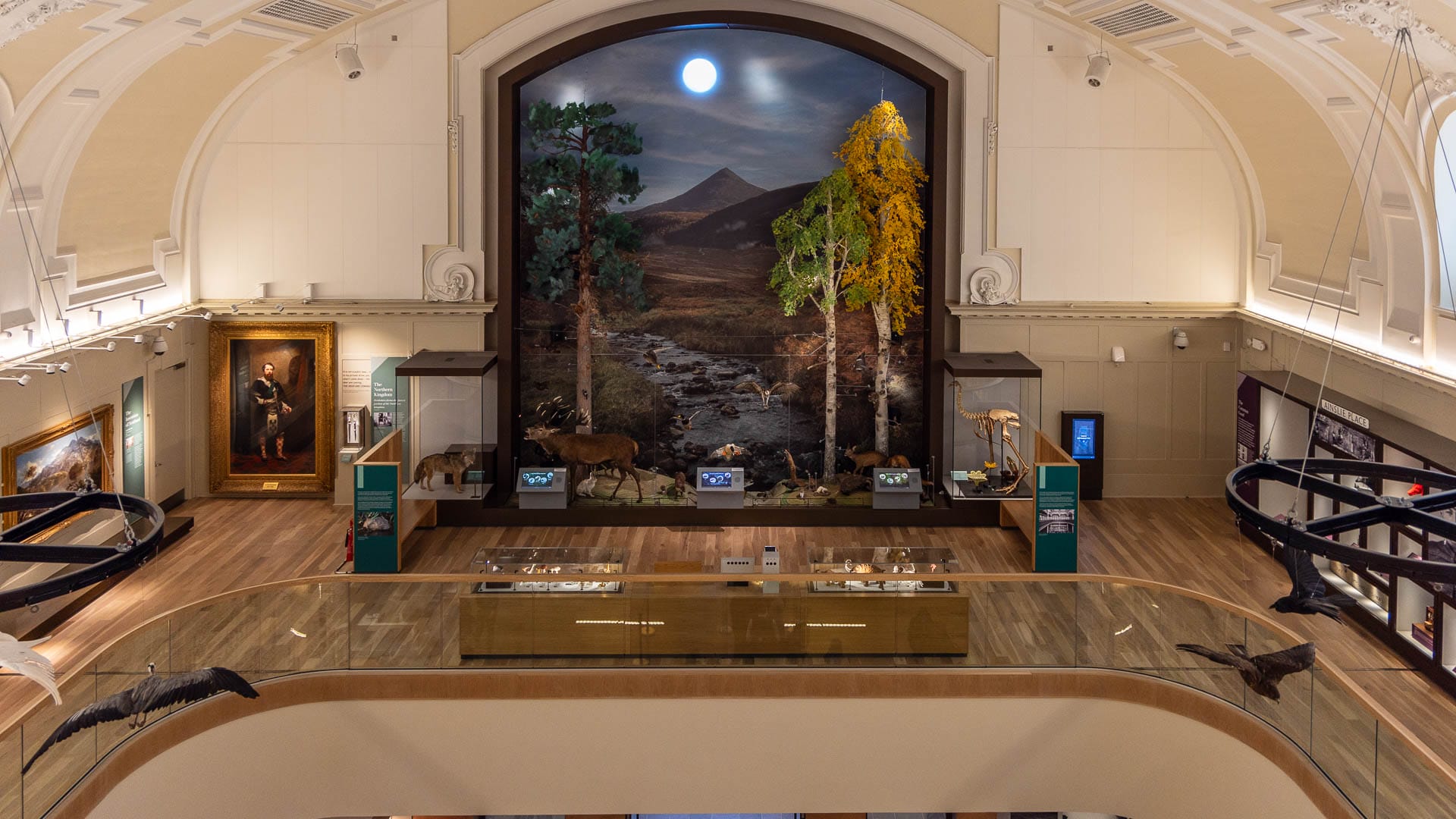
Below this ceiling is a gallery and the ground floor. Both floors are surrounded by external corridors in which further display cases present their numerous treasures.
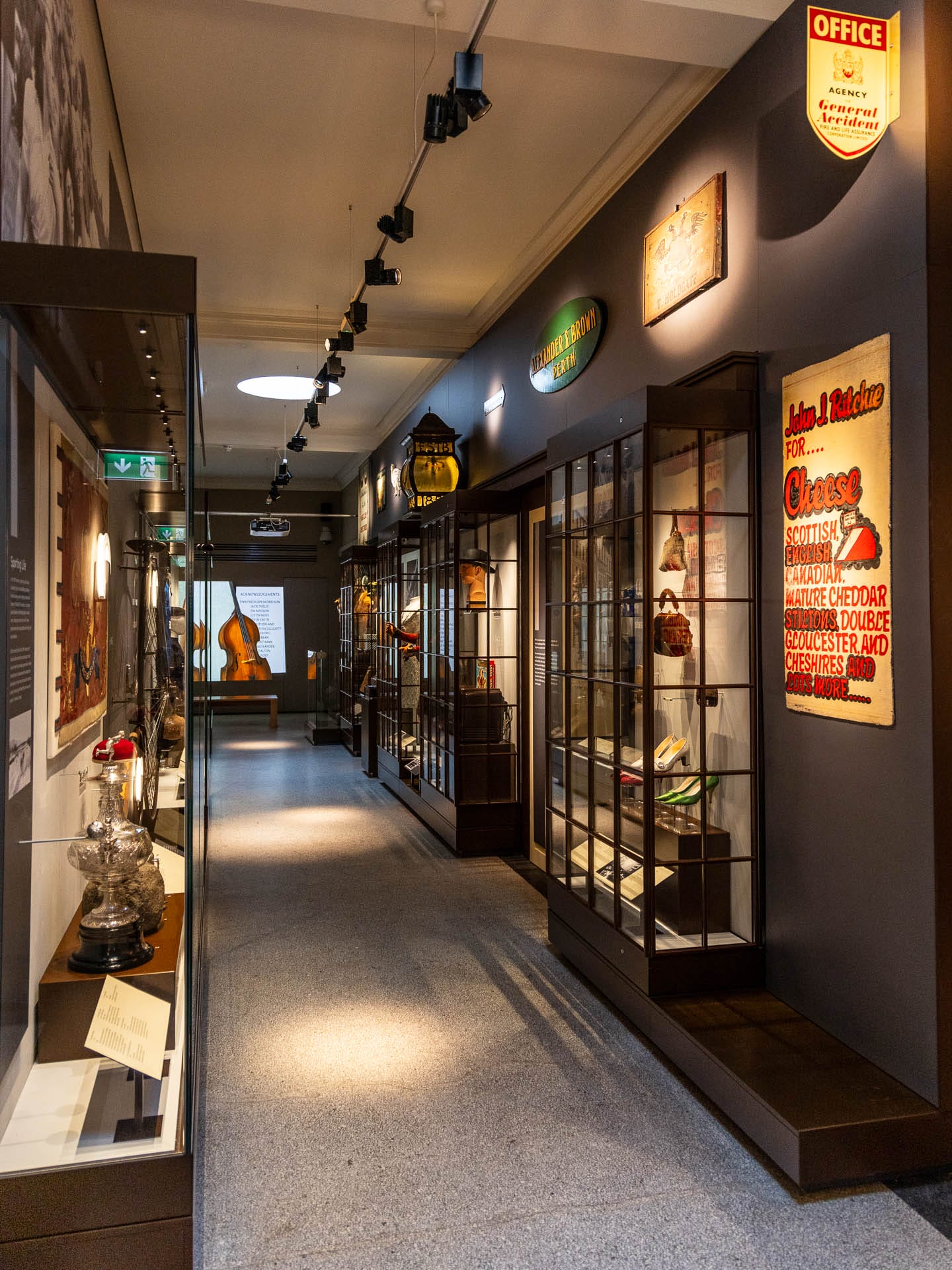
Here are some of the highlights that await visitors to the Perth Museum:
Stone of Destiny
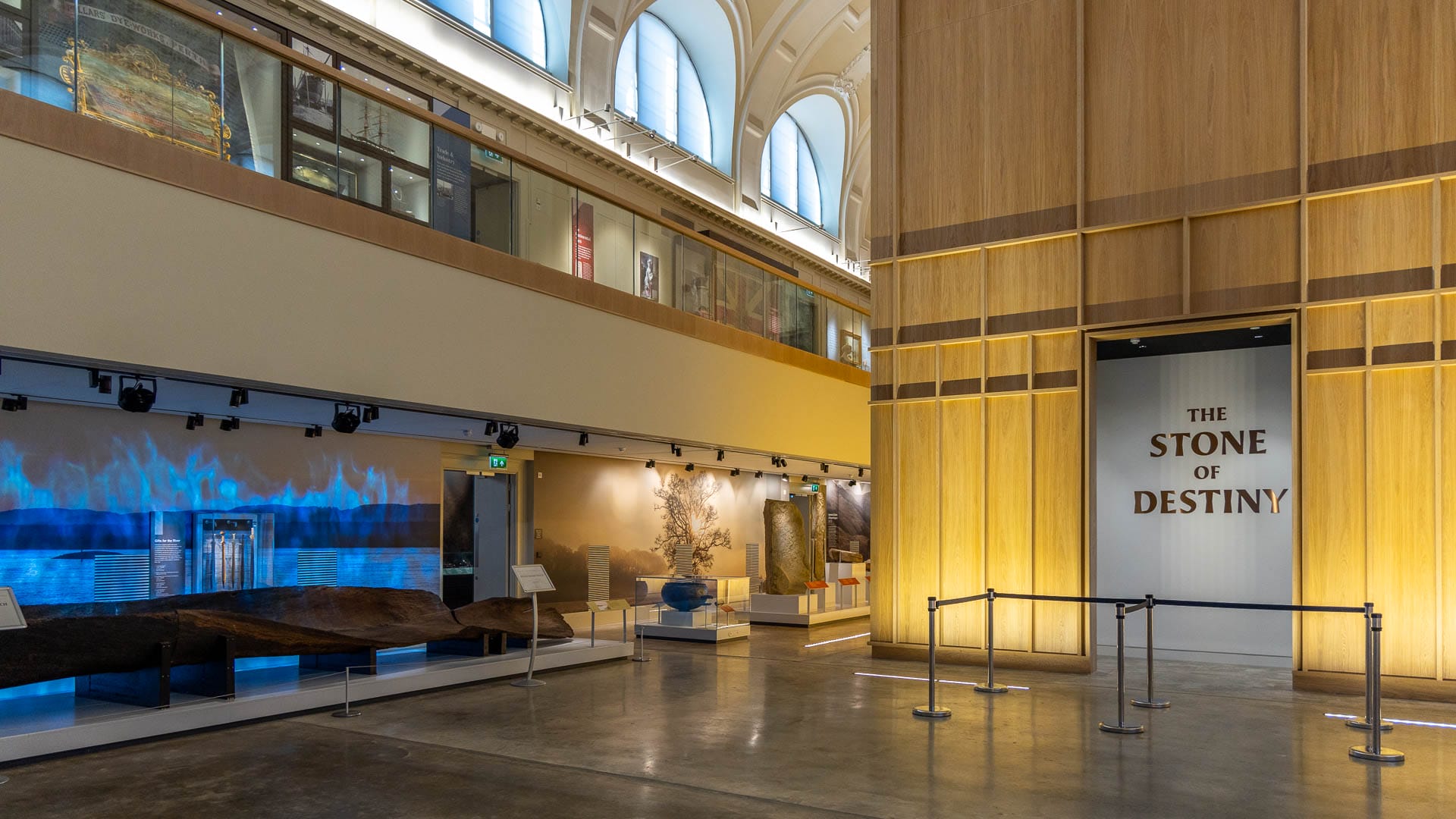
In the centre of the museum, a huge wooden shrine shields a Scottish national treasure, as it contains the Stone of Destiny or Stone of Scone. Scottish kings were once crowned on it. And the stone was recently in London for the coronation of King Charles III. Unlike the rest of the exhibits in the museum, the stone belongs to the British Crown.
While visitors can otherwise move freely around the museum, they have to report to the ticket office to visit the stone and are allocated around ten minutes. There are two rooms inside: an anteroom that explains the history of the stone and the treasure chamber itself. However, there is enough time to get an idea of the huge sandstone. But only mentally. Photos are not allowed.
Carpow Logboat
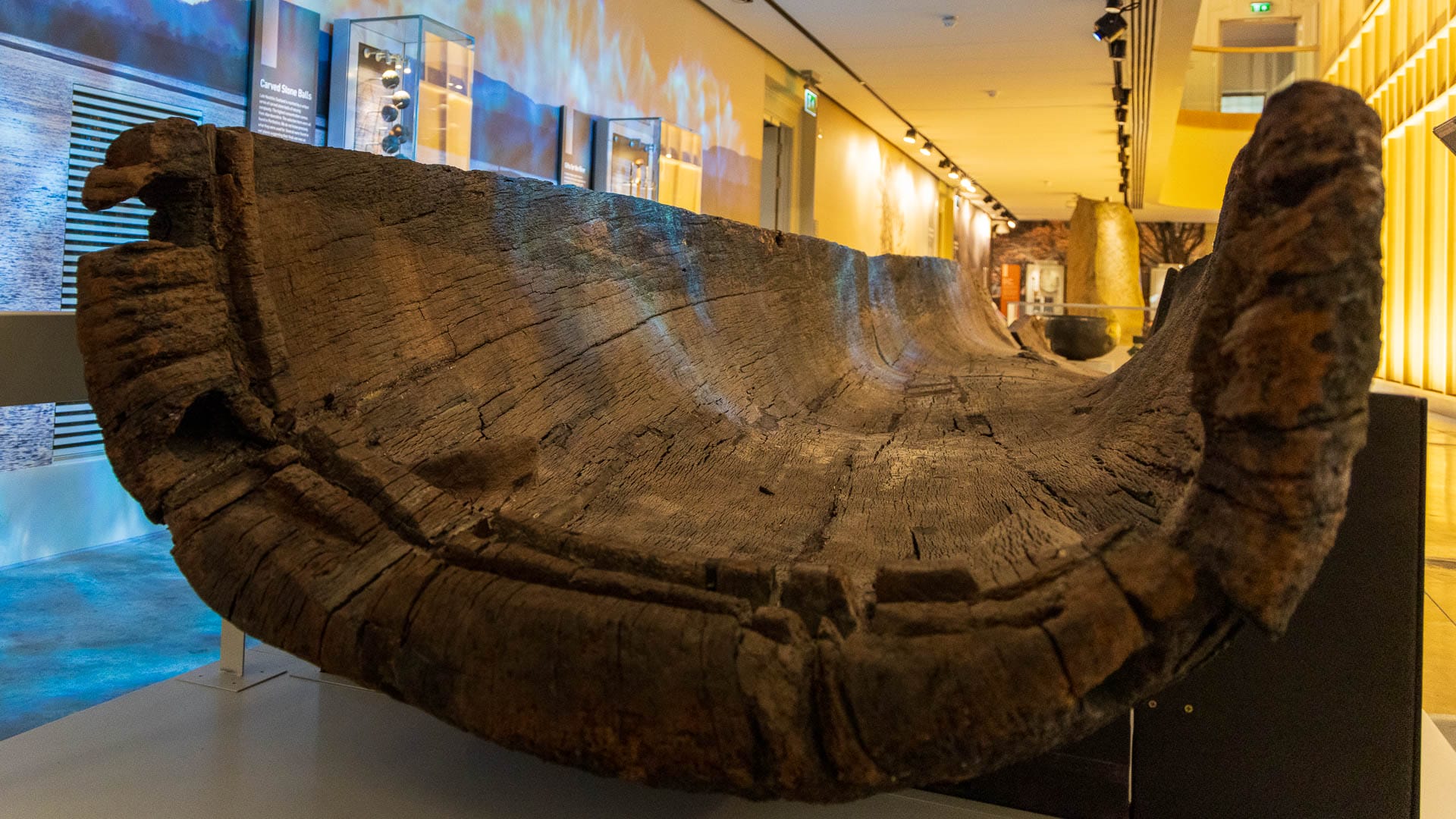
The actual journey in the Perth Museum begins on the left after the entrance. From 10,000 years before our time, the exhibits accompany the visitor through the development of Scotland and Perthshire. One highlight: the Carpow Logboat. This dugout canoe from around 1000 BC was found near Perth in the River Tay. In order to preserve the piece and bring it to the museum, it had to be sawn into two pieces with a heavy heart. But hardly anything of it can be seen. A fascinating piece.
On the walls and in the side corridors behind the boat are other exciting pieces from the Stone, Bronze and Iron Ages. For example, a woman’s skull and a man’s skeleton, mysterious stone balls from the Stone Age, weapons, axes and much more.
St Madoes Stone
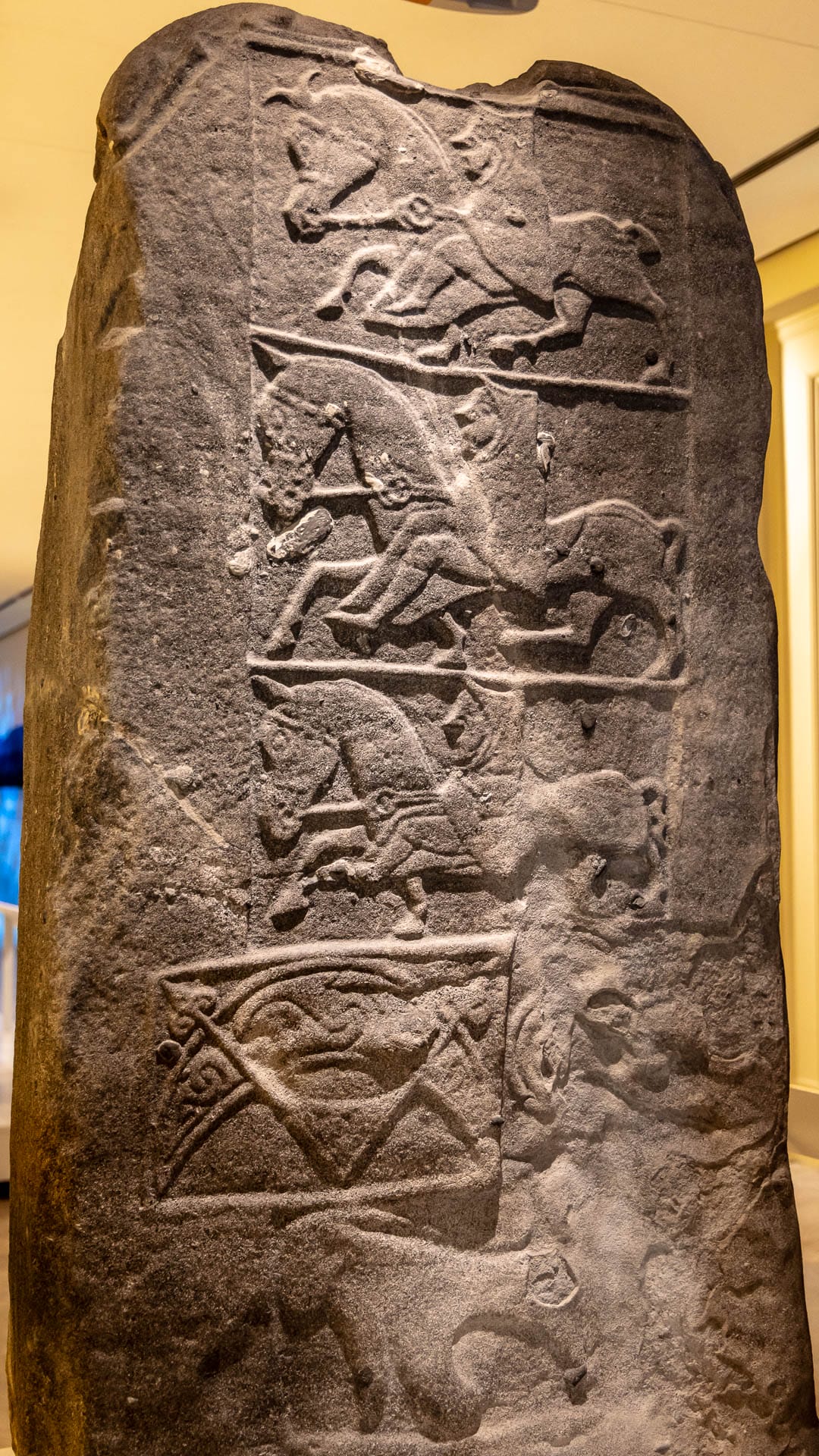
Finally, the time of the Picts has arrived. The St Madoes Stone towers proudly at the back of the ground floor. A stone of the Picts from the 8th century, it shows the skill of the stonemasons of the time. From there, the tour continues through the Middle Ages to modern times.
Further highlights
It would not be fair to limit the exhibition to these pieces. A few more exciting exhibits should therefore be mentioned. For example, the Strathmore meteorite that struck near the village of Coupar in 1917. Or the armour of the New Model Army, a Jacobite sword, silk clothing, a suffragette flag and much more.
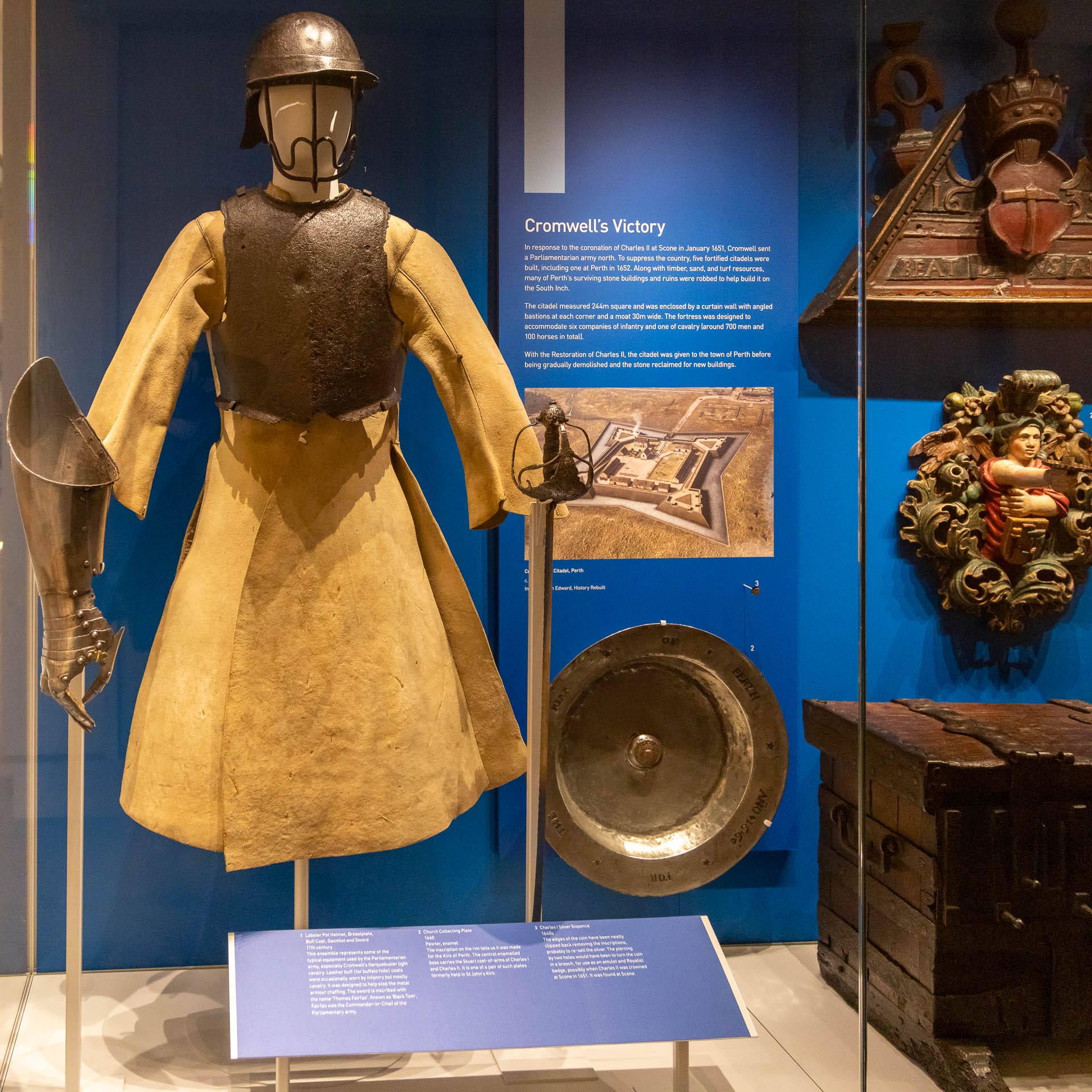
All in all, the new Perth Museum is a real asset to the city and the region. The fact that an old building has been preserved but given a modern feel WITHOUT creating an ugly chimera shows the care taken by those involved. And the many interesting treasures and clear explanations make the Perth Museum a real highlight.
Knowledge: Creation of the Perth Museum
Perth struggled for a long time over whether and where the new museum should be built. To be clear: not all of the city’s residents are enthusiastic about the solution. But now that the Perth Museum has found its home, the dust is slowly settling. Partly because the interior has turned out beautifully and the Perth Museum is an exciting place to go, especially for families.
The multi-purpose hall in the centre of the city dates from shortly after 1900 and was used for shows, concerts, auctions and meetings. But the construction of the new concert hall in the city made it redundant. Many people preferred to have the old hall demolished and a square created near the pedestrian zone. Instead, the monumental, cool building with its many columns is now home to the museum.
But even the entrance doors set a fitting, modern accent in copper. Dutch architects Mecanoo, who also designed parts of the New York Public Library, were responsible for the redesign.
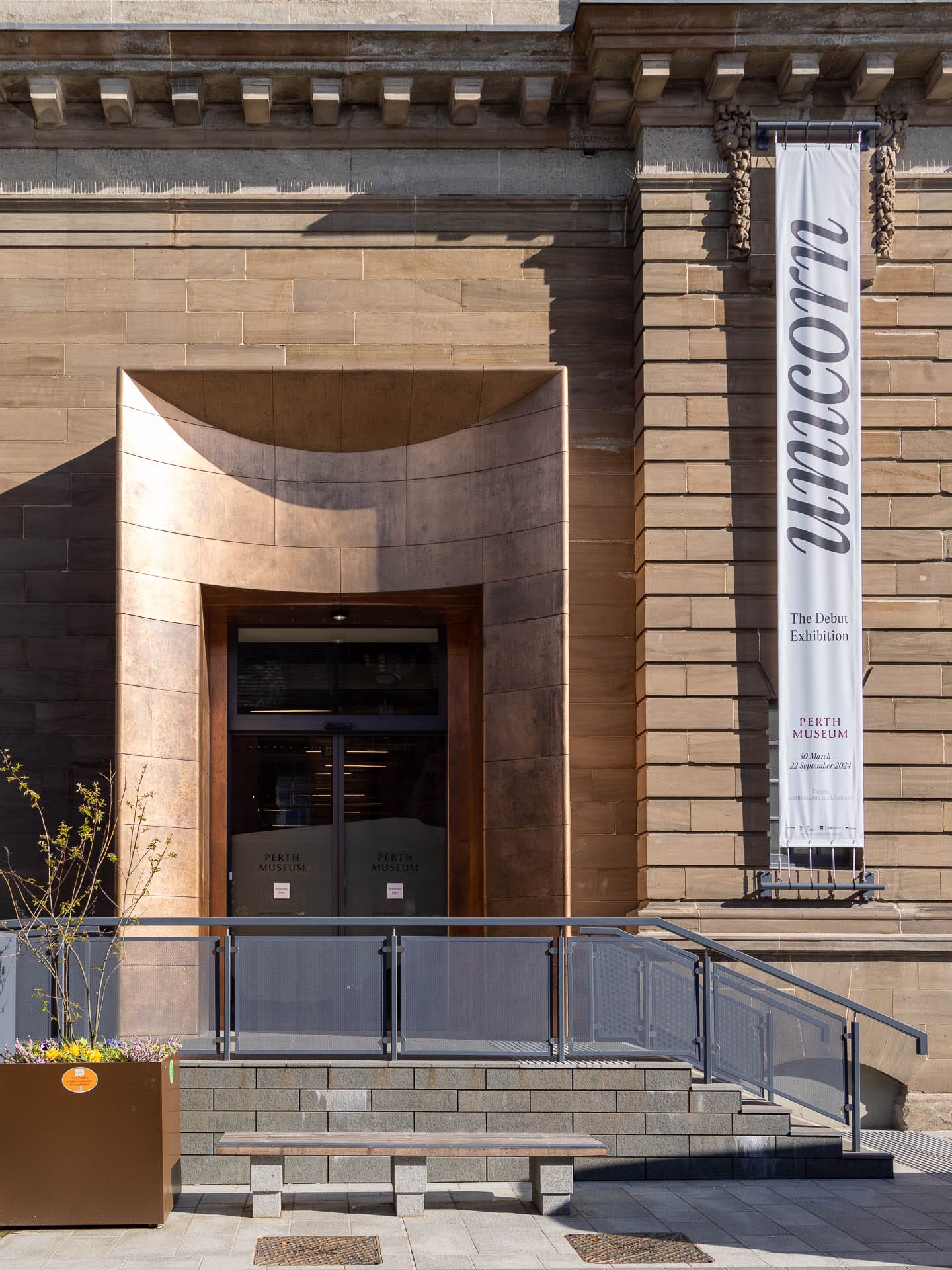
The museum’s collection comprises around 500,000 pieces, including artefacts from other parts of the world such as Asia and Oceania.
Getting there and accessibility
It is best to leave your car a little way out of the city centre and walk to the museum if possible. A suitable car park would be South Inch Car Park (Navi: Shore Rd, Perth PH2 8BW, Mapcode: 1Z.19Z3). From there it is a 10 minute walk.
For people who have a disability badge, parking is available on the corner of South Street and King Edward Street, just over 100 metres from the entrance.
All doors are ramped or at ground level. All floors can be reached by lift and guide dogs are permitted.